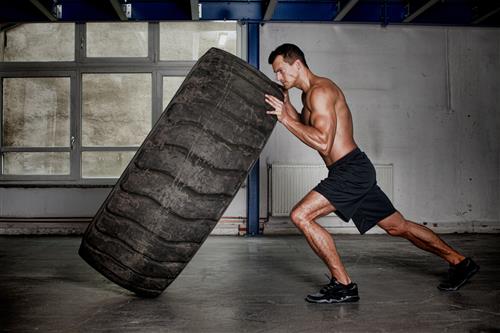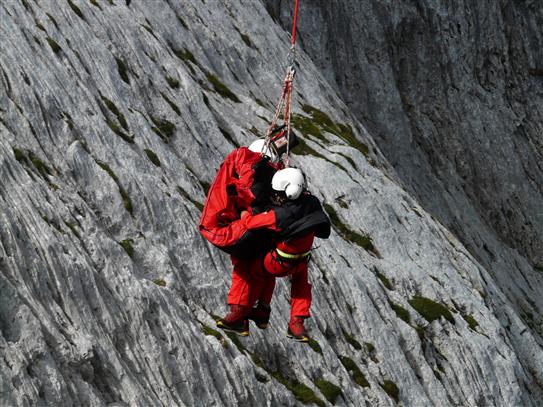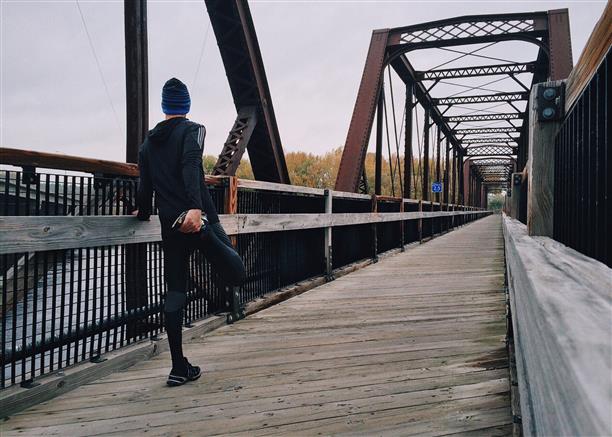Tim Robson’s involvement with trench rescue started in 1994 when his technical rescue team from the Albuquerque Fire Department responded to what the dispatcher called a trench event.
“When we arrived on the scene, no one was there other than a police officer and a grandmother,” Tim recalls. “She couldn’t find her grandson.”
A company doing trench work in front of her home had offered to pay the woman’s teenage grandson hourly to help them. The teenager was inside the trench when it collapsed.

“The company left, and they left him in the trench,” Tim explains. “Unfortunately, it was a fatality. When we found him, he had already succumbed.”
As a result of that experience, Tim understands firsthand the risks involved in trench work and the importance of trench safety. Now, Tim supervises Roco Rescue’s technical rescue teams across the globe and, as a Chief Instructor, leads training courses in – among other things – trench rescue.
Tim is presenting a course on “Managing Excavations” at the North Dakota Safety Council’s 46th Annual Safety & Health Conference later this month. We sat down to talk with Tim recently to find out more about trench safety and why it’s so important.
Roco Rescue: Good afternoon, Tim, and thank you for talking with us today about trench/excavation safety. Let’s start with the overarching question: How dangerous is trench work?
Tim: Trenching/excavation is one of the major fatality-causing occupations in the U.S. right now, according to the Bureau of Labor Statistics. Of the 130 trench/excavation fatalities that occurred between 2011 and 2016, 80% of those occurred in the private construction industry.
What scares us even more is that the number of fatalities is trending up. In 2014, there were 13 fatalities in trench/excavation. In 2015, that number rose to 25. And in 2016, there were 36 fatalities. So nearly half of the fatalities that occurred over a fifteen-year period happened in 2015 and 2016. Despite the fact that the regulations have gotten stricter, the numbers are trending up.

Roco Rescue: We’re going to touch on the OSHA regulations in a moment. First, please explain why the number of fatalities is trending upwards.
Tim: The increase in fatalities goes hand in hand with the uptick in employment and construction; as the economy improves, there’s more construction and, with that, more trenching and excavation.
In addition to more construction, there’s less space. As a country, we’re building more roads, more buildings, and more infrastructure but we have less physical space to do it in.
And in addition to doing more construction in less space, in our world, we have to do more with less. Ten years ago, there were six people working on a construction trenching job; today, there are 4, and that naturally lends itself to more safety violations.
Roco Rescue: What makes trenches so dangerous?
Tim: First, let me explain the difference between a trench and an excavation: an excavation is wider than it is deep, meaning there’s less chance of dirt collapsing because the vertical walls of the trench are sloping. If my wall slopes away from the bottom of the hole I dug, there’s less chance of that wall falling in.
A trench, on the other hand, is deeper than it is wide. If I have to dig a trench with a perfectly vertical wall, because there’s a road right next to where I’m digging the trench, I can almost guarantee a collapse.
To give readers an idea of the physics and mechanics involved when soil collapses, I often use this analogy: A typical collapse involves a couple of yards of dirt. A couple of yards of dirt collapsing into a 6-foot deep trench has the same force as a pickup truck moving 45 miles an hour. If you’re at the bottom of the trench and the soil falls in on you from 6 feet, you’re getting hit with the same amount of force as a pickup truck traveling 45 miles per hour.
When that force hits you, you can’t survive. And that’s just the force. There’s also the compression and blocked airways that the victim experiences. Every time you take a breath, the soil gets closer to your body so now it’s compressing you and you’re not able to expand your chest wall.
That’s why this is such a big concern for OSHA.
Roco Rescue: Let’s talk more about the OSHA regulations. What is OSHA doing to help reduce the number of fatalities caused by trench collapse?
Tim: Last year, OSHA put out a compliance letter urging the construction industry to improve the safety of their trenching and excavation operations.
OSHA requires that any time someone makes an excavation or trench in the ground as part of their occupation, they have to designate what’s called a competent person. That’s usually someone in a management or supervisory position who is tasked with “identifying existing and predictable hazards in the surroundings, or working conditions which are unsanitary, hazardous, or dangerous to employees, and who has authorization to take prompt corrective measures to eliminate them.”
Roco Rescue: Besides designating a competent person, what precautions can supervisors take at work sites to reduce trench injuries/fatalities, and what can workers do to keep themselves safe?

Tim: Construction businesses have to meet the OSHA requirements for trench and excavation safety. To make the trench safe takes more time, more manpower and more labor. Ultimately, safety costs money, which is a challenge for small business in particular.
But the implications for failing to meet the requirements comes with an even bigger cost. Worker safety notwithstanding, the Department of Labor and the Department of Justice now agree that if a fatality occurs on a job site due to a willful violation of an employer, it is now a criminal act.
However, workers are equally responsible for their safety. They are also accountable for their actions. If a trained worker willfully gets into that trench, knowing it’s unprotected, they’re just as culpable as the company that put them there.
In short, the employer’s responsibility is to make sure individuals are trained at work and the employee’s responsibility to understand and follow those requirements.
Roco Rescue: What are three things attendees at your upcoming course at the NDSC Annual Conference can expect to take away from your presentation?
Tim: First, don’t take trench and excavation lightly. There’s a risk that comes with saying, “We’ve always done it this way.”
Second, they’ll leave with an understanding of OSHA’s trench/excavation competent person requirements.
Third, they’ll understand the requirements of AHJ (the authority having jurisdiction), which is generally the host employer. The AHJ is the entity that must deem someone a competent person. As an instructor, I don’t have that authority. Taking my class doesn’t qualify someone as a competent person.
Roco Rescue: How will the course you’re giving at the NDSC Annual Conference differ from Roco Rescue’s training courses in trench rescue?
Tim: At the Roco Training Center, we offer open enrollment courses in trench rescue and can even do a private training based on a specific industry. Our courses teach how to construct a trench so that it won’t collapse and, if it does collapse because of some catastrophic event, teaches workers ways to protect themselves.
Both the courses at the Roco Training Center and my course at the NDSC Annual Conference are focused on compliance, but the course at the NDSC is geared toward a broader audience.
Roco Rescue: What’s your final piece of advice for trench workers, Tim?
Tim: It’s simple: until you know it’s safe, don’t get in the trench.
Roco Rescue: Thank you so much for sharing your knowledge and expertise with us, Tim.
For more information about Roco Rescue’s open enrollment or private training courses in trench safety and trench competent person, check out our training options.






 If that’s not motivation enough, its January resolution time! That said, remember that this is a journey… you probably aren’t going to see radical changes right away, so don’t get discouraged. Take pride in every day you work toward your fitness goals, and if you fall off the horse and into a hot fudge sundae one weekend, don’t despair – just get back on track and stay with it!
If that’s not motivation enough, its January resolution time! That said, remember that this is a journey… you probably aren’t going to see radical changes right away, so don’t get discouraged. Take pride in every day you work toward your fitness goals, and if you fall off the horse and into a hot fudge sundae one weekend, don’t despair – just get back on track and stay with it! Introduction: According to the Chemical Safety Board “Contractor Safety Digest,” the agency has conducted several fatal investigations where insufficient safety requirements for contractor selection and oversight were found to be causal to the incidents.
Introduction: According to the Chemical Safety Board “Contractor Safety Digest,” the agency has conducted several fatal investigations where insufficient safety requirements for contractor selection and oversight were found to be causal to the incidents.  That old adage “You get what you pay for,” holds a lot of truth in so many instances, and especially so with contractors. Now I am not saying that you will never get high quality at a low price, but it is rare. When you put a job out for bid, it is important to list the specifications for the work or product that you need the bidders to meet, but equally as important is to list other specifications besides the job or product scope, and one of these specifications is safety.
That old adage “You get what you pay for,” holds a lot of truth in so many instances, and especially so with contractors. Now I am not saying that you will never get high quality at a low price, but it is rare. When you put a job out for bid, it is important to list the specifications for the work or product that you need the bidders to meet, but equally as important is to list other specifications besides the job or product scope, and one of these specifications is safety. A hiring client can rely on the various sites to set default requirements for the type of work they need and the associated criteria that must be met, or the hiring client can modify or specify custom needs that must be met. The scoring for potential contractors typically is graded on some sort of easy to view scale such as green-meets all requirements, yellow-meets most requirements but falls short on one or more non-critical criteria, or red-fails to meet basic or critical criteria. Some score it like school grades A, B, C, D, F.
A hiring client can rely on the various sites to set default requirements for the type of work they need and the associated criteria that must be met, or the hiring client can modify or specify custom needs that must be met. The scoring for potential contractors typically is graded on some sort of easy to view scale such as green-meets all requirements, yellow-meets most requirements but falls short on one or more non-critical criteria, or red-fails to meet basic or critical criteria. Some score it like school grades A, B, C, D, F.  Well, there is another old adage that goes like this “Who pays the piper, calls the tune.” Once you have engaged with a contractor, it is imperative that they understand your expectations regarding safety and accept that as part of the job performance. This is the time to ensure that not only legislated safety requirements are met, but also any hiring client safety policies that may exceed OSHA are also explained and understood.
Well, there is another old adage that goes like this “Who pays the piper, calls the tune.” Once you have engaged with a contractor, it is imperative that they understand your expectations regarding safety and accept that as part of the job performance. This is the time to ensure that not only legislated safety requirements are met, but also any hiring client safety policies that may exceed OSHA are also explained and understood.


